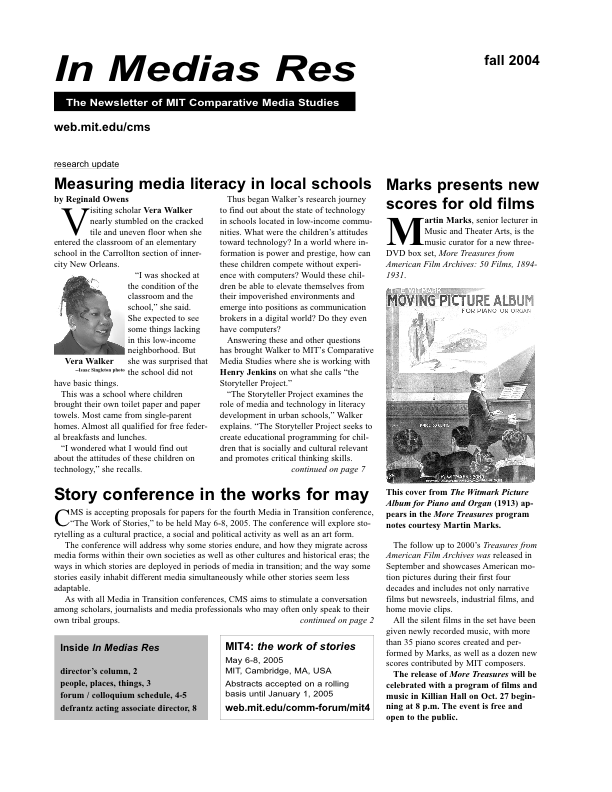
At the first colloquium this term, we brought together students from the Comparative Media Studies Program with peer leaders from the Youth Voice Collaborative, a YWCA-based initiative focused on giving high school students skills at dissecting the ways that the media shapes our understanding of our identities.
It was fun sitting back and watching the graduate students entering the room and finding so many chairs occupied by the predominantly African-American adolescents who were there to help lead us through some of their educational exercises.
For both sides, there was a moment of misrecognition and confusion about what kind of person engages in media analysis. And then, the walls started to break down as the two groups got to know each other better and learned to respect what we each brought to the conversation.
This was one of several events planned this term to introduce students to people working in the Boston-area community around issues of media literacy. We began the year with an orientation session that included demonstrations of the videogame Revolution and the Metamedia project; presentations by Shigeru Miyagawa about studying visual culture and Tommy Defrantz about performance studies; and culminating with a session with James Valastro from ACME, a group that goes into schools and helps kids learn about how media works by having them design and produce their own responses to alcohol and cigarette advertisements.
We hosted a joint event with the Computing Cultures group in the Media Lab and the Center for Reflexive Technologies focused on technologies for community building. We hosted a Communications Forum event about MIT’s OpenCourseWare initiative, and we are planning an event where visiting scholar Roberto Aparici talks with local teachers about the challenges of learning and researching in the information age.
Through these and other conversations this year, there is a growing recognition that Comparative Media Studies has something significant to contribute to media literacy education.
Because we understand media in a broader sense (as encompassing not simply digital or modern mass media, but also traditional forms of expression and storytelling) and because our faculty come from so many disciplines, we have a chance to demonstrate what it would mean to see media literacy not as an added-on subject but as something that can be integrated across the curriculum.
Even though many recognize the importance in giving students knowledge of how media operates, they often don’t know how to fit such learning into a school day so rigidly defined by state and national educational standards. What if media literacy was understood as a paradigm shift (like multiculturalism) which impacted how we taught history, literature, government, art, even math and science? The projects being developed by Metamedia and the Education Arcade offer models for how media education goes hand in hand with the study of Melville, Shakespeare, and the American Revolution. We need to expand access to these tools, seeing teacher training and outreach as a central part of the research and development process.
Because of our own emphasis on the blurring between theory and practice, we have a chance to model approaches to media literacy which include hands-on activities and teach children how to become media makers. We would not accept a definition of print literacy that taught students how to read but not how to write, and we should not accept a definition of media literacy that emphasizes discerning consumption but not expression.
And because of our interest in the communities that form around games and other popular culture, we are ideally positioned to examine the informal learning that occurs outside of school spaces, a theme increasingly central to debates about education.
To have this impact, we must first develop an understanding of the kinds of work that is already taking place in media education and identify groups with whom we can partner in ways that will have a real impact on our local community and beyond. Many of our students and faculty are already doing work that touches the Boston community. For example, this issue of In Medias Res foregrounds the work that Vera Walker has been doing to better understand what kinds of teaching and storytelling resources should be developed to meet the needs of minority and inner-city youths.
I am eager to hear from any member of the CMS community who has thoughts about how we can do more in this area.



